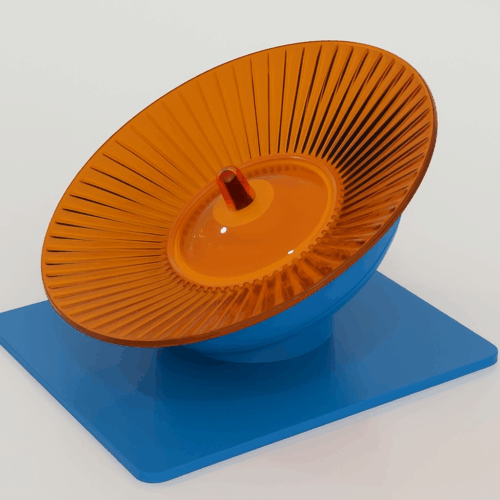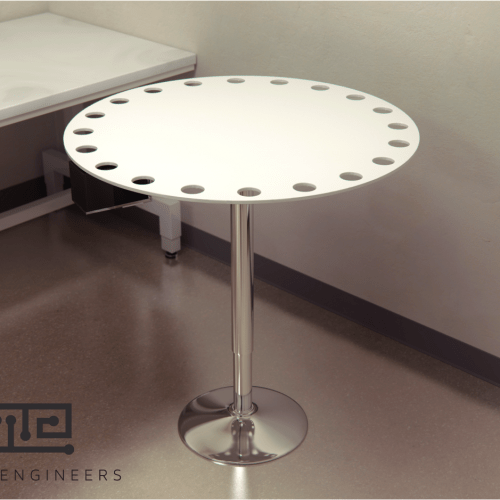Among rodents, mice have enjoyed significant popularity as the preferred animal of choice for research. Mice are easy to maintain and handle, and also have a high reproduction rate which allows the opportunity to minimize experimental variations. Another advantage of mice over other animal models, such as pigs and rats, is the rich literature available and the ability to create transgenic knock-in and knock-out strains. Mice also share high homology with humans making them suitable for modeling many human diseases and disorders. Though different strains of mice are available, the inbred strain, especially the C57BL/6 mice, is the most widely used strain.
Overview
Mouse Behaviors and Characteristics
| Scientific Name | : | Mus musculus |
| Habitat | : | Can be found in diverse environments |
| Weight | : | 40 to 45 g |
| Diet | : |
Omnivores
|
|
Reproduction Sexual Maturity
Gestation Period Litter size |
:
: : |
Females reach sexual maturity at about six weeks of age and males at about eight weeks.
19 to 21 days Average 6 to 8 |
|
Social Behavior Herding
Hierarchy
Communication |
:
:
: |
A social group of mice usually includes one male and two or more related females.
Depending on the territory range, mice can shift from territorial behavior to social hierarchy. Males are known to be aggressive defenders of their territory. Among non-commensal groups, females are also known to show aggressive behaviors towards unfamiliar females.
Mice communicate using ultrasonic vocalizations. However, most social communications rely on pheromones. |
| Senses | : |
· Mice have a dichromat vision. · Mice have well developed olfactory senses. · Mice use their whiskers for tactile activities. · Mouse hearing ranges from 1 to about 100 kHz. |
| Other behaviors & characteristics | : |
· Mice pregnancy can be affected by odors from males and other females. Unfamiliar male odors can result in the termination of pregnancies (Bruce, 1959). · Rats tend to exhibit muricidal behaviors towards mice. · Mice may also use their tails for communication during aggressive interactions. |
- Sort Portfolio:
- All
- Accessories
- Activity
- Ant
- Anxiety and Defensive Behavior
- Automated
- Balance
- Bat
- Bees
- Behavior
- BehaviorCloud
- Bird
- Canine
- Classic
- Cognition
- Conductor Software
- CPP
- Custom
- Cuttlefish
- Decision Making
- Drosophila
- Environmental Enrichment
- Fungi
- Historical
- Human
- Insect
- InventionUp
- Labyrinth
- Learning and Memory
- Modifications
- Navigation
- Octopus
- Odor
- Operant
- Operant Builder
- Pain/Analgesia
- Pig
- Planaria
- Plant
- Poeciliid
- primate
- Robotics
- Sheep
- Social Behavior
- Spatial Navigation
- Spotlight
- Tech Transfer
- Trims
- Virtual Reality
- Visual Cues
- Zebrafish
 Parallel Beam Task
Parallel Beam Task
Parallel Beam Task
The parallel beam task is commonly used to assess motor deficits in laboratory rodents.
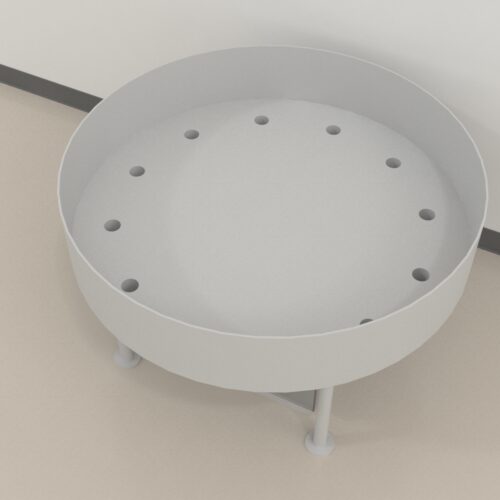 Circular Hole Board
Circular Hole Board
Circular Hole Board
A hole board apparatus with removable inserts and easy cleaning. Affordable for your budget. Great exploration data for the best price.
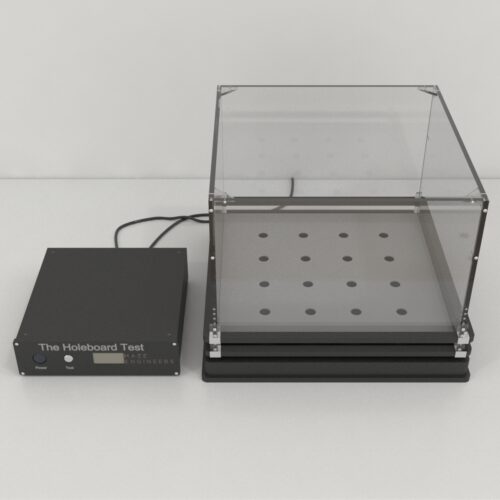 Activity Hole Board
Activity Hole Board
Activity Hole Board
Automated hole board system is used for the detection of nose poke behaviour in the open field environment with maximum flexibility.
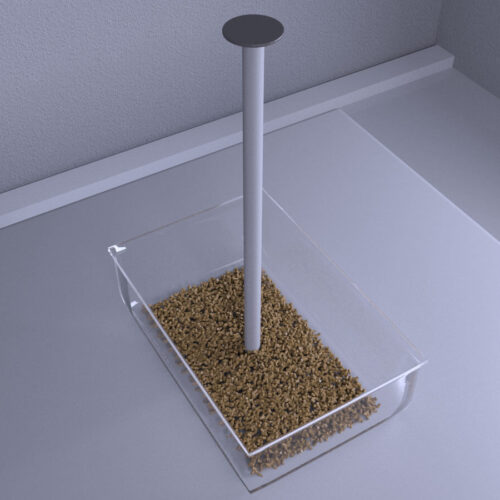 Pole Test
Pole Test
Pole Test
The Ant Visual Discrimination Y-Maze creates a simple two-choice environment to allow the evaluation of foraging behaviors in the presence of different visual cues.
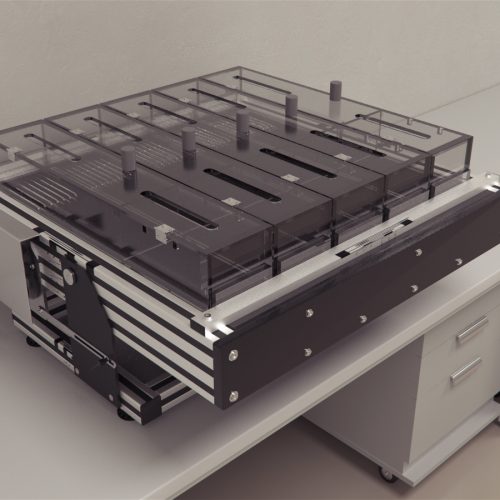 Rodent Metabolic Treadmill
Rodent Metabolic Treadmill
Rodent Metabolic Treadmill
The Treadmill is a noiseless, customizable and well-designed test for activity experiments. it allows for the simultaneous testing of multiple animals.
 Circular Open Field
Circular Open Field
Circular Open Field
Open Field test is a popular protocol used to assess exploratory behavior and anxiety.
 Visual Cliff Apparatus
Visual Cliff Apparatus
Visual Cliff Apparatus
The Visual Cliff Apparatus was used to study if the reduction of the ATPase inhibitory factor 1(IF1) leads to visual impairment in vertebrates. Learn more.
 Sucrose Preference Test Apparatus
Sucrose Preference Test Apparatus
Sucrose Preference Test Apparatus
The Sucrose Preference Test Apparatus was used for sucrose preference test for measurement of stress-induced anhedonia in mice. Learn more here.
History
The mice origins can be traced to the lands of the northern Indian subcontinent (Boursot et al., 1996). The species eventually spread to the eastern Mediterranean and the remainder of Europe around 13,000 B. C and 1000 B. C, respectively (Cucchi, Vigne, & Auffray, 2005). Introduction of the mouse into the American continent was the result of human travels. Their commensal nature allowed the mice to adapt to different human environments easily. Eventually, mice went from being pests to pets and were domesticated and bred by fanciers for their colors and docile temperament.
The earliest use of mice in biomedical research can be dated to the mid-16th century to the reproductive and blood circulation experiments of William Harvey and the investigation of the biological consequences of increased air pressure by Robert Hooke. Mice became the animal of choice for Joseph Priestley and Antoine Lavoisier in their experiments of respiration in the 18th century (West, 2014). The 19th century saw a growing interest in genetic. Gregor Johann Mendell began experimenting with the transmission of genetics using mice. However, he shifted to peas (Mendel, 1901) at the complaint of his superior regarding the smell associated with these creatures. Eventually, Mendel’s findings were forgotten until they were rediscovered by Lucien Cuénot in the early 20th century. In his experiment published in 1902, Cuénot observed the involvement of genes in the production of pigments and enzymes. The observation of albino mice resulting from lack of pigment validated Mendel’s law of inheritance in animals. Cuénot also went on to describe a lethal mutation in the mouse agouti locus in his 1905 paper.
The year 1902 also saw the beginning of mice breeding for genetic studies by William E. Castle. The breeding program led to Clarence C. Little, who at that time was working in Castle’s laboratory, to inbreed mice to eliminate variation. A collaborative effort between Castle, Little and the fancy mice breeder Abbie Lathrop, led to the development of the first inbreed strain of mice the DBA (Dilute, Brown and non-Agouti; DBA/2 strain) in 1909 (Russell, 1978). A decade later, Lathrop developed the C57BL/6 strain and the C3H, the CBA, and the A strains were created by L.C. Strong at the Cold Spring Harbor Laboratory (Hedrich, & Bullock, 2004).
The latest breakthrough in mice model was in 1974 when Rudolf Jaenisch and Beatrice Mintz developed the first transgenic mice resulting from injection of retrovirus DNA into early mouse embryos (Jaenisch, & Mintz, 1974). Following the development of the first transgenic mammal, Capecchi, Evans, and Smithies developed the first knockout mouse in 1987 for which they were awarded the 2007 Nobel Prize in Physiology or Medicine (Mak, 2007). Finally, in the year 2002, the mouse genome mapping was completed using the C57BL/6 strain, further facilitating their use in research (Gregory et al., 2002; Waterson et al., 2002).
Strains
Though outbred and transgenic mice are available, inbred strains are a popular choice in research. Over 400 inbred strains of mice have been established over the years for research purposes. The possibility of the creation of knock-in and knock-out mice and the large litter sizes make mice ideal for research. The following are the most common strains of mice used in biomedical researches.
DBA/2 Mice
The DBA mice were the first strain of mice to be developed via inbreeding. Developed by C. C. Little in order to segregate stock for coat color, the non-agouti, dilute brown mouse can be difficult to rear due to poor lactation. The strain has 3 recessive alleles that lead to hearing loss of high frequencies at weaning, which becomes severe by 2 to 3 months of age. The young ones are also susceptible to audiogenic seizures though this decreases in adulthood. Though not sensitive to the development of atherosclerotic lesions of the aorta, the strain has a high susceptibility for calcareous pericarditis, calcified lesions of the testicles, tongue, and muscles. DBA/2 are commonly used in behavior, immunology, oncology, pharmacology, and toxicology researches.
C57BL/6J Mice
The C57BL inbred mice were also the result of the efforts by Little in collaboration with Miss Abbie Lathrop. The sub-strain 6 was the most popular of the surviving strains. The black mice are good breeders but display cannibalistic behaviors towards their pups, which can make rearing them difficult. However, despite their aggressive nature, they are easy to manipulate and have a life expectancy of about 2 years. The strain is resistant to audiogenic seizures, have a relatively low bone density, and develop age-related hearing loss. The strain is popular as a genetic background in transgenic models due to its potential for expressing a wide variety of mutations. The C57BL/6 are susceptible to diet-induced obesity, type 2 diabetes, and atherosclerosis. The strain is commonly used in cardiovascular, development biology, infections, and metabolism research among other areas. The C57BL/6J was used to complete the genome mapping of mice in 2002.
BALB/c Mice
Halsey J. Bagg developed the strain in 1913 which was then inbred by E. C. McDowell in 1923. BALB/c mice are albino and can be difficult to rear due to their aggressive nature. The strain can suffer from ulcerative blepharitis and periocular abscesses in addition to hydrocephalus and malocclusion. The strain is commonly used in cardiovascular, immunology, parasitology, and virology research among other areas.
SWISS Albino Mice
The Swiss mice are an outbred albino strain that is widely used general-purpose strain in research. Swiss mice are good breeders and display strong maternal instincts and are often used as donor and/or recipient of embryos. Aging mice of this strain exhibit a high incidence of lung and mammary gland tumors and develop extreme polydipsia and polyuria. The strain is highly susceptible to experimental allergic encephalomyelitis and intermediate susceptibility to developing atherosclerotic aortic lesions (on an atherogenic diet). The strain has general-purpose application in research including reproduction and embryology, teratology, and toxicology research.
Training Considerations
Mice are a popular laboratory animal among rodents. Mice are also prey animals and can be sensitive in nature. The following are some considerations to take into account to ensure the animal’s welfare,
- Allow the animals to acclimate to the research environment at least one week prior to any testing. Regular, positive interactions with the mice make them easy to handle and reduce Care must be taken to prevent any negative interactions with the animals since it will result in increased fear.
- Mice are social animals; thus, housing should allow the opportunity for social interaction and indulgence in normal behaviors such as grooming. Housing should also include the opportunity to rest and withdraw from other mice.
- Holding cages should be large enough or designed to sufficiently accommodate the groups of mice taking into considerations the needs of the animals, especially nursing mothers and the litters. Overcrowding should be avoided.
- Appropriate bedding and flooring should be provided in addition to nesting materials.
- Since mice find bright lights aversive, it is recommended that dark, enclosed space is provided within the holding cages. These spaces can also be helpful for mice during conflicts with cage mates.
- Mice must be familiarized with each other before grouping them into cages to avoid any aggressive behaviors. This can be done either by housing littermates of same-sex together or by placing the newcomer in adjacent cages to allow interactions before introduction into the same
- Social isolation can have a detrimental effect on the animals and hence should be avoided unless absolutely required.
- Physical restraining of the animals during the research should be only done after the animal has acclimated to the device and the handling. Further, it is advisable to keep restraining to a minimum. Restraining devices such as the sling tend to have a calming effect on the animal, and hence, such devices are recommended. (Click here for restraints)
- Chemical restraint that offers minimal stress should be used for invasive procedures to prevent negative handling experiences.
For more details on housing-related considerations, click here.
Mice in Research
Mice offer similar characteristics to humans in terms of genetics, biology, and behavior which facilitate replication of human conditions in these animals. Mice are also easy to handle and maintain in comparison to other animals such as pigs. Further, their short life and reproductive cycles enable observation of several generations of mice in a relatively short period of time. The availability of transgenic strains also further facilitates the use of mice in different researches.
Transplantation Studies
Derecki et al.’s (2012) study showed that bone marrow transplantation could serve as a potential therapeutic treatment for Rett syndrome. Mecp2-/y (Mecp2tm1.1Jae and Mecp2tm2Bird) mice that received syngeneic bone marrow (5 x 106 bone marrow cells) from C57BL/6J mice following lethal split-dose γ-irradiation at 4 weeks of age displayed significantly extended lifespan in comparison to controls. Further, within 4 weeks of transplantation body size, brain weight, and spleen size were normalized. The transplantation also resulted in improved gait and reduction in severe involuntary tremors, in comparison to the controls. It was also observed that mice that had the cranial irradiation blocked did not show microglial engraftment, which consequently did not ameliorate the pathology of the disease.
Using a hebetic female C57BL/6 mice model of premature ovarian failure, Liu et al. (2014) explored the potential of human endometrial stem cells as a possible cell therapy tool. Liu et al. observed that not only did the grafted human endometrial stem cells survive up to 14 days (in vivo) in cyclophosphamide-treated mice, they also led to an increased expression level of the ovarian markers. Both immunofluorescence staining and western blotting revealed an increase in the levels of inhibin α, inhibin β, Anti-Mullerian Hormone, follicle-stimulating hormone receptor, and Ki67, in comparison to the ovaries that received human fibroblasts grafts. Additionally, the human endometrial stem cells grafted group also displayed ovarian weight similar to their wild-type cohorts. Over time an increase in plasma E2 level and the number of normal follicles was also observed in the human endometrial stem cells transplanted group.
Psychiatric and Neurological Disorders
Landgraf et al. (2016) observed that disrupting suprachiasmatic nucleus (SCN) circadian rhythms is sufficient in inducing helplessness, behavioral despair, and anxiety-like behavior in mice. Behavioral assay performances were observed in SCN-Bmal1-Knockdown mice and control mice that were maintained in running wheel-equipped cages. The knockdown mice displayed significant increase in the escape latencies and the number of escape failure in the learned helplessness task. Further, even without prior exposure to the task and the opportunity to escape, the SCN-Bmal1-Knockdown mice displayed decreased active avoidance, significantly longer escape latencies and more failures in comparison to control mice. The mice also had significantly higher immobility time in the tail suspension test in addition to spending significantly less time in the light compartment of the Light/Dark box. However, overall activity nor spatial preferences were affected in the knockdown mice in the Open Field test. Landgraf et al. were able to establish the causal relationship between circadian clock disruption and mood disorders without the influence of any noncircadian effects observed in models that rely on global knockouts of clock genes, light/dark manipulations, or SCN lesions.
Pogorelov et al. (2017) assessed the effects of 5-HT2C agonists, JJ-3-45, JJ-3-42, JJ-5-34, and lorcaserin, on mice schizophrenia-like behaviors. C57BL/6J mice displayed attenuation of basal locomotion in the Open-Field test when treated with 30 mg/kg JJ-3-45 and 5 mg/kg JJ-3-42 (in comparison to vehicle group), while 0.25 mg/kg lorcaserin treatment increased locomotion. On induction of hyperactivity by amphetamine, doses of 20 and 30 mg/kg JJ-3-45, 10 and 20 mg/kg JJ-3-42, and 20 mg/kg JJ-5-34 suppressed hyperlocomotion in the Open Field test. However, lorcaserin only was effective at the highest dose amphetamine-disrupted prepulse inhibition in C57BL/6J mice was also restored by JJ-3-45 (0.5 mg/kg), JJ-3-42 and JJ-5-34 (1, 2, and 4 mg/kg) and lorcaserin (0.5 and 1 mg/kg). Further, when C57BL/6J mice were evaluated in a Visual Discrimination Learning task (touchscreen-based), reversal performances of mice treated with JJ-3-45 (2 mg/kg dose) plus MK-801 were reduced below that on mice treated with only MK-801 and vehicle-treated group. Sociability (see Sociability Chamber and Social Y-Maze) and Novel Object Recognition memory tasks were performed using N-methyl d-aspartate (NMDA) receptor subunit NR1 knockdown (NR1-KD) mice. All JJ-compounds resulted in improved social behavior, and novel object recognition memory in the mutants as compared to their wild-type counterparts.
Glynn, Skillings, and Morton (2016) compared the sensitivity of traditional 2-Choice Swim Tank and a semi-automatic touchscreen-based Choice Chamber to assess discrimination learning in mice model of Huntington’s disease (Allelic series of R6/2 mice). In the acquisition phase of the 2-Choice Swim Tank, no impairment was seen in R6/2>400 CAG, R6/2350–400 CAG or R6/2280 CAG mice, while R6/2250 CAG mice (between 12 and 13 weeks) displayed significant performance impairments. However, no performance difference could be observed on the last day of acquisition. With the exception of R6/2350–400 CAG, a significant effect of repeat length was observed on the latency to reach the platform. A significant effect of repeat length was also observed during the reversal trials, with R6/2250 CAG mice performing significantly worse than the R6/2>400 CAG mice and wild-types in addition to taking significantly longer time to reach the platform. In comparison to the 2-Choice Swim Tank, the touchscreen-based Choice Chamber proved to be more sensitive in detecting CAG repeat length-dependent performance deficits up to 10 weeks earlier. Regardless of the method of assessment, performances of the mice were significantly affected by CAG repeat length. Additionally, deficits in long-term memory were also observed based on task performances of the R6/2 mice.
Pfeffer et al. (2018) investigated the behavioral and psychological symptoms of dementia (BPSD) and cognitive impairments of female APP23 mice at ages 8, 19, and 31 weeks. Animals were either housed in standard cages or enriched environment cages. The standard cage APP23 mice spent an increased amount of time in the open quadrants, had an increased number of arm entries and increased time by entries in the Elevated Zero Maze in comparison to the controls. While environment enrichment resulted in an overall reduction of anxiety-behaviors in the APP23 mice, the treatment did not affect time by entries. Environment enrichment also led to improved performances of the APP23 in the Morris Water Maze task, as observed by the increased use of spatial strategies. However, reduction in distance covered was only observed in reversal trials for all APP23 groups with the young-adult APP23 EE covering significantly shorter distances. APP23 mice did not display any motor impairments in the Rotarod test nor anhedonia in the Sucrose Preference test.
Nociception Research
Takasaki, Andoh, Shiraki, and Kuraishi (2000) investigated herpes induced in female BALB/c mice inoculated with herpes simplex virus type-1 (HSV-1) on the shin of the
right hind paw. HSV-1 infection resulted in unilateral development of zosteriform lesions on the inoculated side by day 7-inoculation. By day 8 some mice experienced paralysis of the inoculated hind paw. Mice were assessed for pain-associated responses to different force strengths of von Frey filaments (see Electric von Frey) post-inoculation. Mice expressed brisk withdrawal response and licking (in some cases) to filament strengths 0.03 g and 0.17 g at day 5 post-inoculation up until at least day 8 post-inoculation. Mice inoculated with heat-inactivated HSV-1 did not display any alterations in pain associated responses when tested with von Frey filaments; Thus, it was suggested that allodynia and hyperalgesia were not the results of an inflammatory response to the herpetic protein.
Kaygisiz, Kilic, Senguleroglu, Baydemir, and Erol (2015) observed a central supraspinal antinociceptive effect of pregabalin in mice when assessed in a range of nociceptive assays. Male Swiss albino mice treated with a dose of 30 mg /kg pregabalin displayed an increased percentage of maximal possible effect (% MPE) values in the tail flick test though not in the tail clip. While 100 mg/kg dose resulted in a significant increase in the %MPE in both tests and decreased the number of writhings induced by acetic acid, no effect of any pregabalin dose could be observed in the hot plate (see also Hot/Cold Plate and Thermal Gradient) tests. When combined with other drugs, cyproheptadine (50 mg/kg), naloxone (1 mg/kg) and L-NAME (100 mg/kg), only pregabalin (100 mg/kg) and naloxone resulted in the reduction of % MPE in the tail clip test. The combinations had no effect on the other test performances, including the writhing test.
Cognition, Learning and Memory Research
Wu et al. (2017) investigated the potential of risperidone in ameliorating the cognitive deficits associated with Alzheimer’s disease (AD) using Aβ1-42-mediated neurotoxicity-based model. Male ICR mice were divided into controls, Alzheimer’s disease model (Aβ1-42 410 pmol in 5μl), positive controls (donepezil 1mg/kg) and risperidone groups (Risperidone-H 4.0mg/kg, Risperidone-M 2.0mg/kg and Risperidone-L 1.0mg/kg). Cognitive assessments were performed in 6 different behavioral tests. In the Morris Water Maze task, the risperidone and the donepezil-treated groups displayed significantly decreased escape latencies in the spatial hidden platform test as opposed to the AD model group. The donepezil and Risperidone-H treatment also resulted in significantly increased time in both target quadrant and platform crossing time in the probe trials. Risperidone-H and Risperidone-M treatment resulted in a reversal of Aβ1-42-induced learning and memory deficiency in the Step-through Passive Avoidance test and the Step-Down test, as observed by the decreased number of errors and increased latency time. In comparison to the model group, Risperidone-H group and donepezil group displayed an increased number of head dips in the Hole-Board test, though such an effect was not observed in the Risperidone-M group and Risperidone-L group. Further, donepezil group, Risperidone-H group, and Risperidone-M group showed a significant increase in discrimination index in the Novel Object Recognition and a significant increase in total distances, the number of line crossings and time of central squares in the Open Field test as opposed to the model group.
Wang, Zhang, Abel, Storm, and Xia (2017) were able to observe cognitive decline and olfactory impairments resulting from cadmium exposure in male C57BL/6 mice. Following 20 weeks of exposure to 3 mg/l cadmium, the mice were evaluated in behavior tests. Cadmium-exposed mice displayed a significant reduction in spontaneous alternation in the T-Maze task as well as a significantly lower discrimination index in the Novel Object Location Task. Further, when assessed in Cued and Contextual Fear-Conditioning tests, cadmium exposed mice displayed significantly reduced contextual fear memory, though behaviors were not affected in the auditory-cued fear memory test or novel context test. Evaluation in the short-term olfactory memory task (see also Odor Span Test) showed that exposed mice lost their memory of the odor at the 300 minute time interval as opposed to the 360 minute time point of the control, suggesting a shortening of olfactory memory. Further, cadmium exposed mice also displayed odor-cued associative learning in the Dig Task.
Van Den Herrewegen et al. (2018) evaluated the spatial learning abilities in the mouse model of temporal lobe epilepsy (TLE). Male C57BL/6J mice were slowly injected with kainic acid over 1 minute using a 10-µL micro-syringe at the stereotaxic coordinates: AP, -2 mm; ML, -1.5 mm; and DV, -2.1 mm, respectively. Four weeks following the treatment, the mice were assessed on the Barnes Maze task (see also Radial Water Tread Maze). The kainic acid-treated mice performed significantly worse in terms of primary escape latency than the sham and naïve mice during the acquisition phase. Probe trials conducted one day after the acquisition phase and 1 week later revealed significantly worse long-term memory performance of the kainic acid-treated groups in comparison to naïve and sham mice. Treated mice were observed to opt for serial search strategy significantly more towards the latter stage of acquisition as opposed to the naïve and sham mice. Further, probe trial assessments of search strategy revealed that the kainic acid-treated mice had a lesser preference for spatial strategy (43%) than sham (75%) and naïve (88%) mice on the first probe trial. By the second probe trial preference for the spatial strategy was, even more, lesser in the treated mice (14%) suggesting a progressive failure of development of the efficient spatial strategy.
Locomotion and Motor Behavior Research
Gorton et al.’s (2010) subjected C57BL/6 mice to MPTP lesioning and observed the effects of exercise on the motor and affective behaviors of mice. Mice were divided into the sedentary group, forced treadmill training group, and voluntary wheel running group. It was observed that the lesioning did not result in the reduction of voluntary exercise with mice covering significantly greater distance and velocity with voluntary wheel-running than in forced treadmill exercise. Treadmill training in the MPTP group resulted in a significant increase in overall Rotarod performance, whereas no such improvement could be seen in the wheel-running group. When evaluated for anxiety, both MPTP exercise group buried equivalent numbers of marbles in the Marble Burying test and also reduced anxiety in the Elevated Plus Maze task. Overall assessment and analysis revealed that exercise improved behaviors in the dopamine depletion model without affecting dopamine and serotonin content.
Demirci, Dilbaz, and Akar (2018) investigated the effects of cigarette smoking on mice locomotor activity and anxiety. Male, inbred BALB/c ByJ mice (6 weeks old) were either subjected to 10 cigarettes for 5 days a week for 5 consecutive weeks (chronic) or one day (acute). In comparison to the controls, the acute group covered longer distance while the chronic covered significantly less distance in the Open Field test. Further, the acute group was faster than the controls, while the chronic group displayed significantly lower speed parameter value. The chronic treatment group also had a significantly lower number of entries and decreased time spent in the open arms of the Elevated Plus Maze as opposed to the controls and acute group.
Sheth et al. (2018) investigated dynapenia, sarcopenia, and the loss of motor unit function in aging C57BL/6J mice. Mice were divided into young adult (2 to 8 months), middle-age (10 to 15 months), old (18 to 24), and very old (27+ months) corresponding to human ages. Longitudinal analysis of middle-aged male mice through old age revealed a significant decrease in the absolute forelimb grip strength, as observed in the grip strength test. Compared to the baseline (10 months), at ages 20- and 24-months motor unit number estimation was reduced, accompanied by the reduction in the compound muscle action potential. At 25 months, distal hind limb MRI muscle volumes were significantly reduced as compared with 19 months. Electrophysiological assessment of the triceps surae muscle at 20 months of age revealed reduced motor unit number estimation and increased single motor unit potential. Additionally, a reduction in plantar flexion twitch and tetanic torque, which was strongly correlated to triceps surae motor unit number was also observed. Sheth et al. also observed an effect of sex on single motor unit potential. Female mice displayed a significant change in the single motor unit potential, which was not observed for the male mice. It was suggested that there exists a possibility that the female mice motor neurons are able to form collateral sprouts with aging or to meet the increased demand.
Strengths and Limitations
Strengths
Mice share many similarities in terms of anatomy, physiology, and genetics with humans. Their short life span and quick reproduction facilitates age-related research and reduces experimental variability. Additionally, their small size makes handling and maintenance relatively easier as compared to other animal models such as pigs. Mice prove a better option than models such as Drosophila when studying complex biological systems and tend to develop diseases affecting these systems naturally. Mice are also capable of learning and display complex intelligence in addition to inquisitiveness, making them suitable for learning, memory, and cognitive researches. The vast amount of available literature and the opportunity to develop transgenic lines also makes them a popular animal of choice in research.
Limitations
The small size of mice may make surgical procedures difficult to be performed. The short life span can pose as a possible issue in studies such as those related to Alzheimer’s and Parkinson’s diseases. Despite the shared similarities with humans, mice cannot be used as a cohesive model for all human pathologies and other human-related diseases and behaviors. Extrapolation of data, such as results from drug screening for human applications, should be done with the utmost care and considerations. Like most rodents, mice are also social animals; therefore, isolation or lack of environmental enrichment can potentially affect behaviors. Further, negative interactions with the handler can significantly increase the fear of humans and stress. Aggressive nature of mice towards unfamiliar cohorts must be taken into consideration when introducing unfamiliar individuals.
Summary
- The earliest use of mice as laboratory animals can be dated back to the mid-1600s to the experiments of William Harvey and Robert Hooke.
- The first transgenic mammal was the transgenic mice developed by Rudolf Jaenisch and Beatrice Mintz in 1974.
- Capecchi, Evans, and Smithies developed the first knockout mouse in 1987.
- The mice genome mapping was completed in 2002 using the C57BL/6 strain.
- Popular inbred laboratory mice include the DBA/2, the C57BL/6J, and the BALB/c mice strains. Additionally, transgenic lines of knock-in and knock-out mice are also popular.
- Mice produce large litters which reduce experimental variability.
- Physical or chemical restraining that offers minimal stress to the animals should be used when required.
- Mice are social animals; therefore, isolation over long periods of time can be stressful to them.
- Appropriate measures should be taken before introducing unfamiliar mice to prevent any aggressive behaviors.
References
- Boursot, P., Din, W., Anand, R., Darviche, D., Dod, B., Von Deimling, F., … Bonhomme, F. (1996). Origin and radiation of the house mouse: mitochondrial DNA phylogeny. Journal of Evolutionary Biology, 9(4), 391–415. doi:10.1046/j.1420-9101.1996.9040391.x
- Bruce, H. M. (1959). An Exteroceptive Block to Pregnancy in the Mouse. Nature, 184 (4680): 105. doi:10.1038/184105a0.
- Cucchi, T., Vigne, J.-D., & Auffray, J.-C. (2005). First occurrence of the house mouse (Mus musculus domesticus Schwarz & Schwarz, 1943) in the Western Mediterranean: a zooarchaeological revision of subfossil occurrences. Biological Journal of the Linnean Society, 84(3), 429–445. doi:10.1111/j.1095-8312.2005.00445.x
- Cuénot L. (1905). Les races pures et leurs combinaisons chez les souris. Archives de zoologie expérimentale et Générale, 4, vol 3, pages cxxiii-cxxxii.
- Cuénot, L. (1902). La loi de Mendel et l’héréditié de la pigmentation chez la souris. Archives de zoologie expérimentale et Générale, 3e sér., 10: xxvii-xxx,
- Demirci, D., Dilbaz, E., & Akar, F. (2018). Locomotor Activity and Anxiety Changes With Acute and Chronic Exposure to Cigarette Smoke in Mice. Journal of Education and Training Studies, 6(3a), 109. doi:10.11114/jets.v6i3a.3164
- Derecki, N. C., Cronk, J. C., Lu, Z., Xu, E., Abbott, S. B. G., Guyenet, P. G., & Kipnis, J. (2012). Wild-type microglia arrest pathology in a mouse model of Rett syndrome. Nature, 484(7392), 105–109. doi:10.1038/nature10907
- Glynn, D., Skillings, E. A., & Morton, A. J. (2016). A comparison of discrimination learning in touchscreen and 2-choice swim tank using an allelic series of Huntington’s disease mice. Journal of Neuroscience Methods, 265, 56–71. doi:10.1016/j.jneumeth.2015.07.016
- Gorton, L. M., Vuckovic, M. G., Vertelkina, N., Petzinger, G. M., Jakowec, M. W., & Wood, R. I. (2010). Exercise effects on motor and affective behavior and catecholamine neurochemistry in the MPTP-lesioned mouse. Behavioural Brain Research, 213(2), 253–262. doi:10.1016/j.bbr.2010.05.009
- Gregory, S. G., Sekhon, M., Schein, J., Zhao, S., Osoegawa, K., Scott, C. E., …, Bentley, D. R. (2002). A physical map of the mouse genome. Nature, 418(6899):743-50.
- Hedrich, H. J., & Bullock, G. R. (2004). The laboratory mouse. Place of publication not identified: Academic Press.
- Jaenisch, R., & Mintz, B. (1974). Simian virus 40 DNA sequences in DNA of healthy adult mice derived from preimplantation blastocysts injected with viral DNA. Proceedings of the National Academy of Sciences of the United States of America, 71(4):1250-4.
- Kaygisiz, B., Kilic, F. S., Senguleroglu, N., Baydemir, C., & Erol, K. (2015). The antinociceptive effect and mechanisms of action of pregabalin in mice. Pharmacological Reports, 67(1), 129–133. doi:10.1016/j.pharep.2014.08.013
- Landgraf, D., Long, J. E., Proulx, C. D., Barandas, R., Malinow, R., & Welsh, D. K. (2016). Genetic Disruption of Circadian Rhythms in the Suprachiasmatic Nucleus Causes Helplessness, Behavioral Despair, and Anxiety-like Behavior in Mice. Biological Psychiatry, 80(11), 827–835. doi:10.1016/j.biopsych.2016.03.1050
- Liu, T., Huang, Y., Zhang, J., Qin, W., Chi, H., Chen, J., … Chen, C. (2014). Transplantation of Human Menstrual Blood Stem Cells to Treat Premature Ovarian Failure in Mouse Model. Stem Cells and Development, 23(13), 1548–1557. doi:10.1089/scd.2013.0371.
- London, 26, 1e32.
- Mak, T. W. (2007). Gene targeting in embryonic stem cells scores a knockout in Stockholm. Cell, 131(6):1027-31.
- Mendel, G. (1901). Experiments in plant hybridisation. Journal of the Horticultural Society of
- Nishioka, Y. (1995). The origin of common laboratory mice. Genome, 38(1), 1–7. doi:10.1139/g95-001
- Pfeffer, A., Munder, T., Schreyer, S., Klein, C., Rasińska, J., Winter, Y., & Steiner, B. (2018). Behavioral and psychological symptoms of dementia (BPSD) and impaired cognition reflect unsuccessful neuronal compensation in the pre-plaque stage and serve as early markers for Alzheimer’s disease in the APP23 mouse model. Behavioural Brain Research, 347, 300–313. doi:10.1016/j.bbr.2018.03.030
- Pogorelov, V. M., Rodriguiz, R. M., Cheng, J., Huang, M., Schmerberg, C. M., Meltzer, H. Y., … Wetsel, W. C. (2017). 5-HT2C Agonists Modulate Schizophrenia-Like Behaviors in Mice. Neuropsychopharmacology, 42(11), 2163–2177. doi:10.1038/npp.2017.52.
- Russell, E. S. (1978). Origins And History Of Mouse Inbred Strains: Contributions Of Clarence Cook Little. Origins of Inbred Mice,33-44. doi:10.1016/b978-0-12-507850-4.50010-x
- Sheth, K. A., Iyer, C. C., Wier, C. G., Crum, A. E., Bratasz, A., Kolb, S. J., … Arnold, W. D. (2018). Muscle strength and size are associated with motor unit connectivity in aged mice. Neurobiology of Aging, 67, 128–136. doi:10.1016/j.neurobiolaging.2018.03.016
- Takasaki, I., Andoh, T., Shiraki, K., & Kuraishi, Y. (2000). Allodynia and hyperalgesia induced by herpes simplex virus type-1 infection in mice. Pain, 86(1), 95–101. doi:10.1016/s0304-3959(00)00240-2
- Van Den Herrewegen, Y., Denewet, L., Buckinx, A., Albertini, G., Van Eeckhaut, A., Smolders, I., & De Bundel, D. (2018). The Barnes Maze Task Reveals Specific Impairment of Spatial Learning Strategy in the Intrahippocampal Kainic Acid Model for Temporal Lobe Epilepsy. Neurochemical Research. doi:10.1007/s11064-018-2610-z
- Wang, H., Zhang, L., Abel, G. M., Storm, D. R., & Xia, Z. (2017). Cadmium Exposure Impairs Cognition and Olfactory Memory in Male C57BL/6 Mice. Toxicological Sciences, 161(1), 87–102. doi:10.1093/toxsci/kfx202
- Waterston, R. H., Lindblad-Toh, K., Birney, E., Rogers. J, Abril, J. F., Agarwal, P., …, Lander E. S. (2002). Initial sequencing and comparative analysis of the mouse genome. Nature, 420 (6915): 520–62.
- West, J. B. (2014). Joseph Priestley, oxygen, and the Enlightenment. American Journal of Physiology-Lung Cellular and Molecular Physiology, 306(2), L111–L119. doi:10.1152/ajplung.00310.2013
- Wu, L., Feng, X., Li, T., Sun, B., Khan, M. Z., & He, L. (2017). Risperidone ameliorated Aβ1-42-induced cognitive and hippocampal synaptic impairments in mice. Behavioural Brain Research, 322, 145–156. doi:10.1016/j.bbr.2017.01.020

